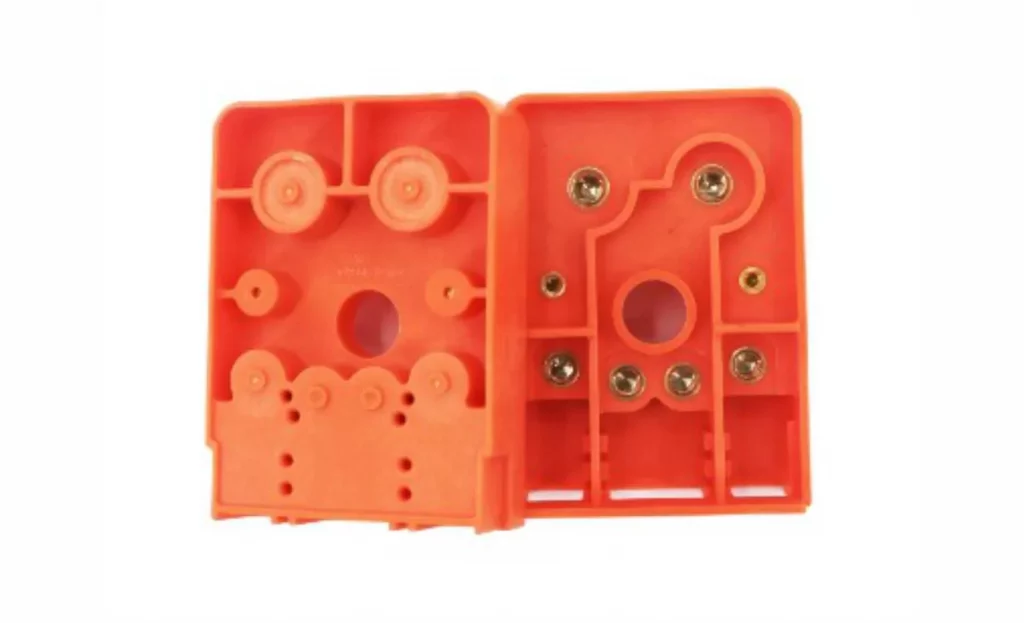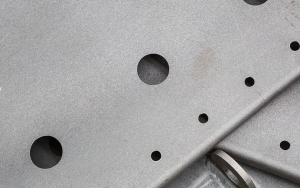The hardness of TPU is usually expressed by internationally recognized Shore hardness. Generally, it is used to represent the hardness below 100 degrees, such as 80A, 90A, 95A, 98A, etc., and D is used to represent the hardness above 100 degrees, such as 50D, 60D, 64D, 71D, 74D, etc.
The function of injection molding is to process TPU into required parts, which is divided into three discontinuous processes: pre molding, injection, and machine. There are plunger and screw injectors. Screw injectors are recommended because they provide uniform velocity, plasticization, and melting.

1. Design of injection molding machine
Injection molding machine material barrel lining with copper-aluminum alloy, the screw chrome plating to prevent wear. Length to diameter ratio of screw L/D=16~20 is better, at least 15; Compression ratio 2.5/1 to 3.0/1. Check rings should be installed near the top of the screw to prevent backflow and maintain maximum pressure.
TPU should be processed with an artesian nozzle. The outlet is an inverted cone, with a nozzle diameter of more than 4mm and less than the main channel ring entrance 0.68mm.
From an economic point of view, the injection volume should be 40% to 80% of the quantitative amount. Screw speed 20~50r/min.
2. Injection molding Mold design
The following points should be paid attention to in injection molding mold design:
a. Shrinkage rate of molded TPU parts
Shrinkage is affected by molding conditions such as the hardness of raw material, the thickness of parts, shape, molding temperature, and mold temperature.
Usually the shrinkage range is 0.005~0.020cm/cm. For example, 100×10×2mm rectangular test piece, in the length direction of the gate, the flow direction of the contraction, hardness 75A than 60D 2 ~ 3 times. The influence of TPU hardness and thickness on shrinkage is shown in Figure 1. It can be seen that when the TPU hardness is between 78A and 90A, the shrinkage of the parts decreases with the increase of the thickness. When the hardness is 95A ~ 74D, the shrinkage increases slightly with the thickness increase.
b. flow passage and cold cavity
The main channel is a channel connecting the nozzle of the injection machine to the shunt channel or cavity in the mold. The diameter should be expanded inward, with an Angle of more than 2o, to facilitate the flow channel’s discharge. The diverging channel is the channel connecting the main channel and each cavity in the multi-groove mold, and the arrangement on the mold should be symmetrical and equidistant distribution. Flow channel can be round, semicircular, rectangular, and 6~9mm is appropriate. The runner surface must be polished like the mold cavity to reduce flow resistance and provide faster mold filling speed.
The cold material hole is a hole at the end of the main passage, which is used to collect the cold material generated between two injections at the end of the nozzle to prevent blockage of the shunt or gate. When cold material is mixed into the cavity, the product easily produces internal stress. The diameter of the cold cavity is 8~10mm, and the depth is about 6mm.
c. gate and exhaust port
Gate is connected to the main channel or shunt channel and cavity passage. Its cross-sectional area is usually smaller than the flow channel, is the smallest part of the flow channel system. The length should be short. The shape of the gate is rectangular or round, and the size increases with the thickness of the product. The thickness of the product is less than 4mm, and the diameter is 1mm. Thickness 4~8mm, diameter 1.4mm; Thickness of more than 8mm, the diameter of 2.0~2.7mm. The location of the gate is generally selected in the thickest product and does not affect the appearance and use of the place, and the mold wall at right angles, to prevent shrinkage, avoid spinning lines.
Exhaust product is a groove-shaped air outlet opened in the mold to prevent the molten material from entering the mold from being involved in the gas and discharge the gas from the mold cavity. Otherwise, it will make products with pores, poor welding, mold filling dissatisfaction, and even due to air compression and high-temperature products will be burned, parts produce internal stress. The exhaust port can be located at the end of the melt flow in the cavity or on the parting surface of the mold. It is a 0.15mm deep and 6mm wide slot.
Attention must be paid to mold temperature control as far as possible to avoid warping and torsion.
3. Molding conditions
The most important molding conditions for TPU are temperature, pressure, and time that affect plasticizing flow and cooling. These parameters affect the appearance and performance of TPU components. Good processing conditions should yield uniform white to beige parts.
a. Nozzle temperature
The nozzle temperature is usually slightly lower than the highest temperature of the barrel to prevent the drooling phenomenon that may occur in the straight-through nozzle. If a self-locking nozzle is used to eliminate salivation, the nozzle temperature can also be controlled within the highest temperature range of the barrel.
b. Mould temperature
Mold temperature greatly influences the internal properties and apparent quality of TPU products. Its height depends on the crystallinity of TPU and the size of the product, and many other factors.
The mold temperature is low, the melt is frozen prematurely, and the streamline is generated. It is not conducive to the growth of spherulite so that the product crystallinity is low. The late crystallization process will occur, thus causing the product after shrinkage and performance changes.
c. Pressure
The injection molding process is pressure, including plasticizing pressure (back pressure) and injection pressure. When the screw goes back, the pressure on the top melt is the backpressure, which is regulated by the relief valve. Increasing the back pressure will increase the melt temperature, reduce the plasticizing speed, make the melt temperature uniform, color mixture uniform, melt gas discharge, and prolong the molding cycle. TPU usually has a back pressure of 0. 3 ~ 4 mpa.
At the constant shear rate, viscosity decreases with increasing temperature, but viscosity is not affected by the temperature at the high shear rate as much as at the low shear rate. The injection pressure of TPU is generally 20-110 mpa. The holding pressure should be about half of the injection pressure, and the backpressure should be 1. Below 4MPa to make TPU plasticized evenly.
d. Time
The injection molding time required to complete an injection process is called the molding cycle. Forming cycle includes mold filling time, pressure holding time, cooling time, and other times (mold opening, mold stripping, mold closing, etc.), which directly affect labor productivity and equipment utilization rate. TPU forming cycle is usually determined by hardness, workpiece thickness, and configuration. TPU hardness high cycle is short, plastic parts thick cycle is long, plastic parts complex configuration cycle is long, forming cycle is also related to mold temperature. TPU molding cycle is generally between 20~60s.
e. Injection speed
The configuration of TPU products mainly determines injection speed. Thick end products need lower injection speed, and thin end is faster.
f. The screw rotation speed
TPU products usually require a low shear rate, so low screw speed is appropriate. The screw speed of TPU is generally 20-80 r/min, and 20-40 r/min is preferred.
Because TPU degradation may occur during a prolonged time at high temperature, it should be cleaned with PS, PE, acrylic plastic, or ABS after shutdown; Heating should be turned off if downtime exceeds 1 hour.
4. Post-processing for products
TPU, due to uneven plasticizing in the barrel or different cooling rates in the mold cavity, often produces uneven crystallization, orientation, and shrinkage, so the product has internal stress, which is more prominent in thick-wall products or products with metal inserts. The mechanical properties of the products with internal stress often decline in storage and use, and the surface has silver lines or even deformation and cracking.
Annealing temperature depends on the hardness of TPU products, high hardness products annealing temperature is also higher, low hardness temperature is also low; Too high temperature may cause warping or deformation of the product, too low to eliminate the purpose of internal stress. TPU annealing should be used for a long time at low temperatures. Low hardness products placed at room temperature for a few weeks can achieve the best performance. The hardness of Shaul A85 below annealing 80℃×20h, A85 above 100℃×20h can be. Annealing can be carried out in a hot air oven. Pay attention to the location of local overheating and deformation of products.
Annealing can eliminate not only internal stress but also improve mechanical properties. As TPU is a two-phase form, phase mixing occurs during TPU hot processing. During rapid cooling, due to the high viscosity of TPU, phase separation is very slow, so enough time must be allowed to separate it and form microzones to obtain the best performance.
5. Insert injection molding

In order to meet the requirements of assembly and use strength, TPU components need to be embedded with metal inserts. The metal insert is placed in a predetermined position in the mold and then injected into a whole product.
TPU products with inserts are not firmly bonded to TPU due to the large difference in thermal properties and shrinkage between metal inserts and TPU. The solution is to preheat the metal insert because after preheating, and the insert reduces the temperature difference of the melt so that the process of injection can make the melt around the insert cooling slower, more uniform shrinkage, a certain hot material feeding effect, prevent excessive internal stress around the insert. TPU Mosaic molding is relatively easy. The shape of the insert is not limited. As long as the insert after degreasing, it is heated at 200 ~ 230℃ 1. 5 ~ 2min, the peel strength can reach 6 ~ 9kg/25mm. For a stronger bond, the insert can be coated with an adhesive, heated at 120℃, and injected.
6. Recycled materials
In TPU injection molding processing, the main channel, shunting channel, unqualified products, and other wastes can be recycled. According to the experimental results, the 100% recycled material is not mixed with new material, and the mechanical properties decline is not too serious so that it can be used completely.
It should be noted that the recycled materials and new materials have the best specifications of the same variety, have been contaminated or annealed recycled materials to avoid use, recycled materials do not store too long, it is best to immediately granulation, dry use. The melting viscosity of recycled material should generally decrease, and the forming conditions should be adjusted.
Categories
Share On
Recent Post

CNC Machined Parts Surface Finish Explained
In the world of precision manufacturing, CNC machining and injection

Sandblasting Surface Finish Explained
Sandblasting is a powerful method used in different industries to


